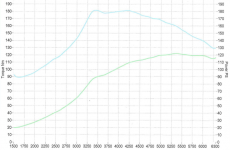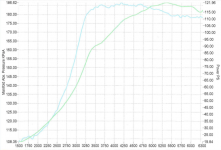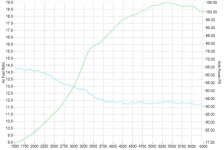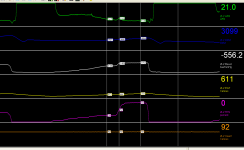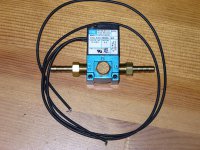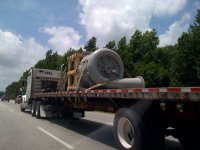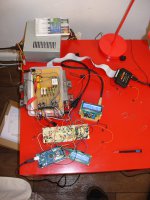Small dips in AFR on sudden accelerator press are normal, but this should last in the range of a second - two. The ECUs have routines and corrections for that, but it seems to me that the ECU is slow to react anyhow, causing a reverse dip soon after. That is, you press it, fuel goes quite lean then very rich, then stablises. Especially at light loads. However, if you are already at a considerable load, but not yet boosting, the AFR should be already rich, then you may get a "lean" dip, but it would still be within a rich range. I will try to dig out my logs from wideband, you will see.
The retarded chip - I would assume the retardation is only at ECU's Wide Open Throttle conditions. So that it only kicks in when you are nearing or entering boost. Otherwise, and putting AFR aside, you would get a very sluggish car off-boost. On a decompressed engine you actually want the opposite off-bost - ignition advance. Hence in my personal opinion the whole MF2 setup is just crap.
AFR at idle: what you are saying tells me you are running with a O2 sensor disconnected? My AFR at idle is by the book, oscillates around 14.7, and so it is as long as the load is light, only the characteristics / amplitude of oscillation changes, this is done on purpose by the ECU (in some load ranges it goes very wildly 14.0 - 15.3). As soon as the load increases open loop kicks in and AFR becomes what I tuned it be. Basically a clean stock-like behaviour that took me a long time to work out. The very exact value at idle in my case also depends on which/what lambda sensor I use. The narrow band lambda that died not so long ago produced 14.7 with the tendency to go above that (14.6-15.0). Now I run on the emulated signal from the wide-band module and that gives 14.7 with the tendency to go more below (14.5-14.8). This has to do with the reaction times of the hardware which are different in the two cases.
EDIT: See the attached pic for the AFR dip. Mind you, this happens in a very short time, something I do not see on the gauge display.


